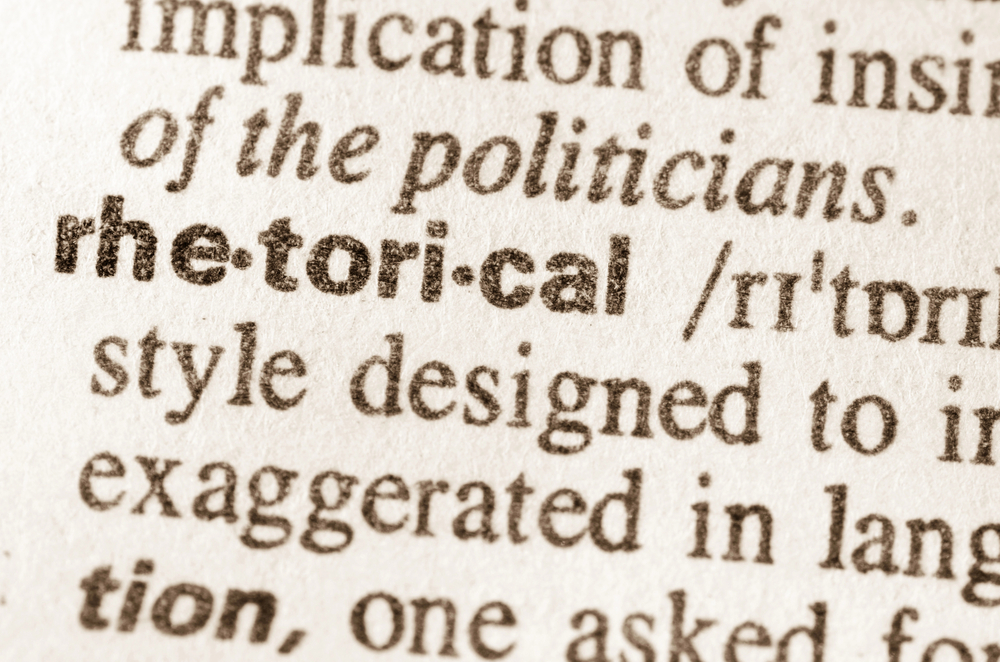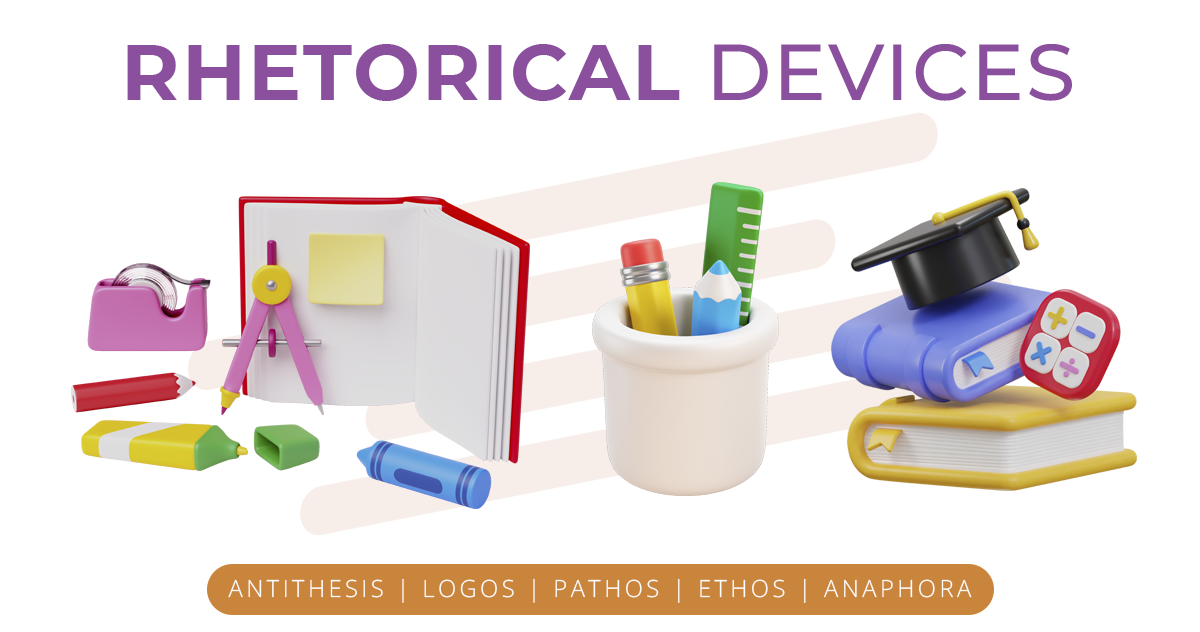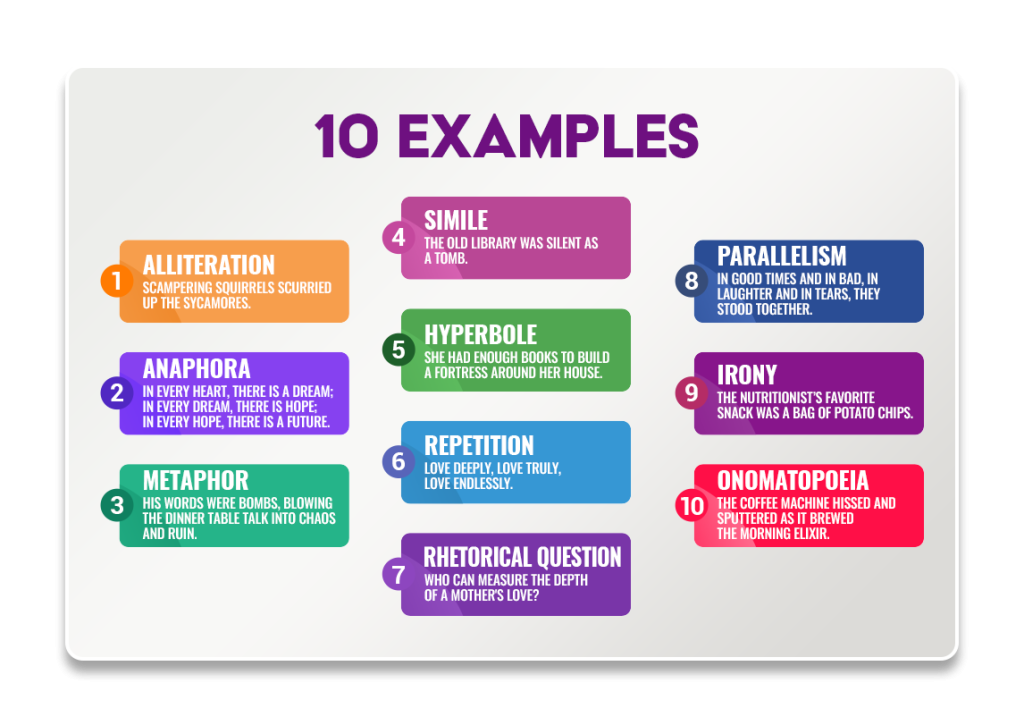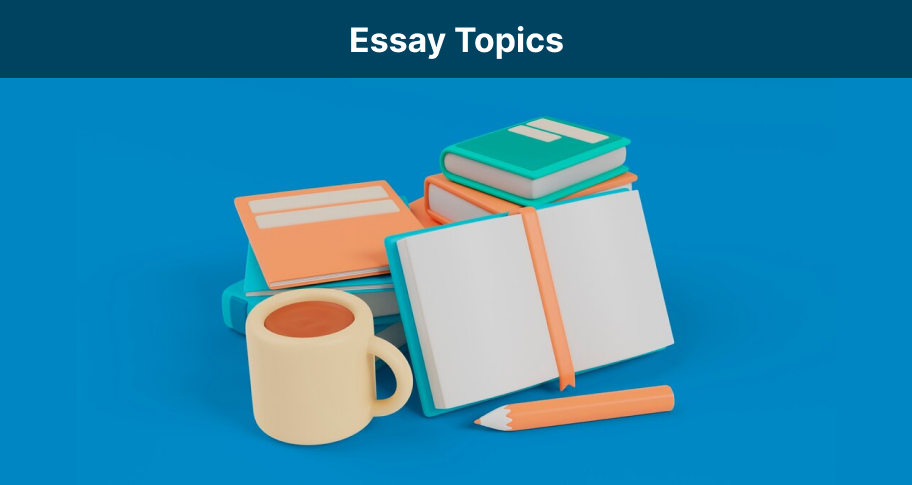Introduction
Ever wondered how powerful speakers and writers make their words so compelling? Rhetorical devices are linguistic techniques designed to enhance persuasion and leave your audience with an impact they will not forget. You know that expression, “The pen is mightier than the sword?” Well, that’s an example of a rhetorical device right there—and it also illustrates the point we’re going to make in this tutorial: these devices are not just tools for professional orators or writers but are essential for anyone who wants to communicate more effectively. When you know how to use language effectively, you can maximize you impact on your audience’s mind and feelings. In short, words can do a great deal more in a matter of moments than muscles or brawn can do in a span of months or years.
In this article, we will explore what rhetorical devices are. We will look at how to use rhetorical devices, and also cover the different types of rhetorical devices. Along the way we’ll give you lots of useful examples that will help you better understand, so strap in!
Why Rhetorical Devices Matter
Rhetorical devices are a big reason why some people have success and others don’t. Some people just come across as larger than life, as in control, as commanding and competent. The reason is they have words and know how to use them. They can elevate ordinary language into a more persuasive, effective memorable, and impactful form that resembles an art. They don’t have to be writers or speakers—just people who are mindful of how language has the power to unlock even the most stubborn locks.
View 120,000+ High Quality Essay Examples
Learn-by-example to improve your academic writing
Interested? We bet you are. Here are just a few good reasons why understanding and using rhetorical devices is beneficial:
Enhance Persuasion
First off, rhetorical devices can be used to convince an audience of your viewpoint without you having to bend over backwards. Think of all the tools in a garage a mechanic might use: a jack, a dolly, a lift, a tire mount, a breaker bar—they all work differently, but they all help get the job done.
- Rhetorical devices are similar: they help anyone who knows them and knows how to use them effectively convey their message.
- They can be used to strengthen your arguments, make them more accessible, and make them more appealing.
Boost Credibility
Using rhetorical devices demonstrates a command of language and thought, which can make you appear more knowledgeable and trustworthy.
Make Writing More Engaging
These techniques add depth, rhythm, and memorability to your words, transforming basic text into something that captivates the reader.
Influence Emotion
Through specific word choices and structures, you can evoke particular feelings in your audience to support and enrich your message.
Common Types of Rhetorical Devices (With Examples)
| Category | Definition | Rhetorical Device Examples |
|---|---|---|
| Schemes | Unusual word arrangement | Anaphora: Repetition of a word or phrase at the beginning of successive clauses. Example: “We shall not flag or fail. We shall go on to the end. We shall fight in France…”
Antithesis: Juxtaposition of contrasting ideas in balanced phrases. Example: “It was the best of times, it was the worst of times…” Parallelism: Use of components in a sentence that are grammatically the same or similar in their construction. Example: “Like father, like son.” |
| Tropes | Figurative language | Metaphor: Implied comparison between two unlike things that actually have something important in common. Example: “It is the east, and Juliet is the sun.”
Simile: Comparison between two unlike things that uses “like” or “as”. Example: “He’s as strong as an ox.” Personification: Attribution of human traits, emotions, or intentions to non-human entities. Example: “The trees shivered in fright at the baleful wind.” |
| Logical Appeals | Strategies to persuade an audience by reasoning and evidence | Logos (Logical Appeal): Persuading by the use of reasoning. Example: Using statistics and factual evidence to support an argument.
Ethos (Ethical Appeal): Establishing credibility or character. Example: A doctor of philosophy talking about moral issues. Pathos (Emotional Appeal): Persuading by appealing to the reader’s emotions. Example: Charity advertisements that show pictures of people in need. |
How to Use Rhetorical Devices in Your Own Writing
If you want to use different types of rhetorical devices in your writing you need to know how to use them the right way. That means knowing when it is appropriate, where in your writing a rhetorical device would work best, and how to set it up so it seems natural and unforced. Here are a few steps to keep in mind:
- Start with Analysis: Begin by analyzing the writing of other accomplished writers and speakers.
- For example, you can look at Martin Luther King Jr.’s famous “I Have a Dream” speech. Notice how he uses anaphora with the repeated phrase “I have a dream” to inspire his audience. The repetition emphasizes hope and vision, and it creates a rhythmic flow that reinforces the message.
- You can also see how he uses metaphors like “the valley of despair” and “the table of brotherhood” to create vivid imagery and emotional resonance.
When looking at the writing or speeches of others, note the rhetorical devices they use, and keep a log. The more you take notice, the more skilled you will become. Remember: it’s just like being an apprentice in a shop—you have to learn and work with the tools daily to become a true master.
- Practice: Like any other skill, mastery of rhetorical devices comes with practice. Try incorporating different devices into your writing consciously on a daily basis. Start with simpler ones like metaphors or similes and gradually work your way up to more complex structures such as parallelism or antithesis.
- Subtlety is Key: It’s important to use rhetorical devices subtly. They should support your writing without overwhelming it. If overused, they can make your writing seem contrived or manipulative. Instead, let them serve your narrative in a natural way, so that they support your message rather than detract or distract from it. Rhetorical devices should serve the writing—not the other way around.
- Tailor to Your Purpose: Choose rhetorical devices that fit your purpose and audience. For example, if your goal is to evoke emotions, pathos might be your primary tool. If you want to establish credibility on a topic, ethos and logos will be more appropriate. There are different rhetorical devices for different situations and aims—be aware!
Be thoughtful about using rhetorical devices in your writing. These are not tools to be taken lightly. Underuse can cause your writing to be underwhelming. Overuse can cause your work to be too bombastic or overeager. Think about the impact of these tools and get the specs right—just like a mechanic would when using a torque wrench: too loose, and the nuts could come off; too tight and something might break.
View 120,000+ High Quality Essay Examples
Learn-by-example to improve your academic writing
Rhetorical Devices in Pop Culture
Rhetorical devices are literally everywhere you look—but especially in pop culture. The reason is simple: they have a big impact on the memorability of songs, advertisements, and political speeches. Here are some examples:
Songs
Lyrical examples of rhetorical devices can be found across virtually all music genres. For instance:
- Metaphor: In Katy Perry’s song “Firework,” the lyrics “Baby, you’re a firework” use metaphor to compare a person to a firework.
- Alliteration: Eminem’s “Lose Yourself” uses alliteration in the line “Snap back to reality, oh there goes gravity,” which creates a rhythmic flow that complements the song’s intense mood.
- Anaphora: Bob Dylan’s “Blowin’ in the Wind” repeats the phrase “How many” at the beginning of successive lines to emphasize the numerous questions about peace and freedom.
Advertising
Advertisers are some of the best when it comes to using rhetorical devices to create memorable and persuasive messages. Examples include:
- Parallelism: The slogan for eBay, “Buy it. Sell it. Love it.” This is a great example of parallelism to create a catchy phrase that emphasizes the simplicity and joy of using the platform.
- Hyperbole: Red Bull’s slogan, “Red Bull gives you wings,” is a good use of hyperbole to exaggerate the effects of the energy drink. A person hears that slogan and feels uplifted and excited by the idea of drinking Red Bull.
- Antithesis: The classic tagline for the movie “Alien,” “In space, no one can hear you scream,” uses antithesis to create a stark contrast that highlights the isolation and fear associated with space to intrigue viewers by a mash-up of horror and sci-fi genres.
Political Speeches
Politicians often use rhetorical devices to persuade and move their audiences. Examples include:
- Anaphora: In Barack Obama’s victory speech, he repeats “Yes we can” to create a sense of audacity, fulfillment, unity and hope.
- Ethos: In John F. Kennedy’s inaugural address, he establishes credibility by referencing shared values and history, such as “We dare not forget today that we are the heirs of that first revolution.”
- Pathos: Winston Churchill’s speech “We shall fight on the beaches” uses emotional appeals to bolster British morale during World War II, evoking a sense of resilience and determination.
As you can see, pop culture is loaded to the gills with rhetorical devices. ot only allows you to see how pervasive and influential they are but also provides a contemporary context that can make the study of rhetoric more engaging and relevant.

Conclusion
Rhetorical devices are the backbone of great, moving, artistic, and persuasive communication. They can elevate simple messages into meaningful narratives. As we have explored in this article, these devices can improve your own credibility, engage the audience’s emotions, and improve the persuasiveness of any form of writing or speech.
From the classic speeches that have shaped our history to the catchy slogans that influence consumer behavior, rhetorical devices can be found everywhere. They are essential tools for anyone who seeks to communicate effectively and leave a lasting impact on their audience.
When you understand and apply rhetorical devices in your writing, you empower yourself to create messages that resonate with your audience. So, whether you are writing a college essay, preparing a business presentation, or simply crafting a social media post, these techniques can improve your ability to persuade and engage by an order of magnitude.
We encourage all readers to see themselves as active and empowered communicators. With the right tools and the knowledge of how to use them most skillfully, you can elevate your communication, influence others, and articulate your ideas with clarity and power.
For anyone looking to go deeper into the art of rhetoric, consider exploring additional resources that provide broader insights into using rhetorical devices. These tools can offer you an even better understanding and greater mastery of persuasive communication, so that your words always hit the mark.
Resources
- Purdue Online Writing Lab (OWL) – Rhetorical Situations
- Purdue OWL offers detailed explanations of rhetorical situations and strategies, useful for understanding how to apply rhetorical devices in different contexts.
- A Handbook of Rhetorical Devices by Robert A. Harris
- This online handbook provides definitions and examples of various rhetorical devices, making it a valuable resource for writers and speakers.
- Silva Rhetoricae (The Forest of Rhetoric)
- Hosted by Brigham Young University, this online resource offers an extensive glossary of rhetorical terms and examples.






